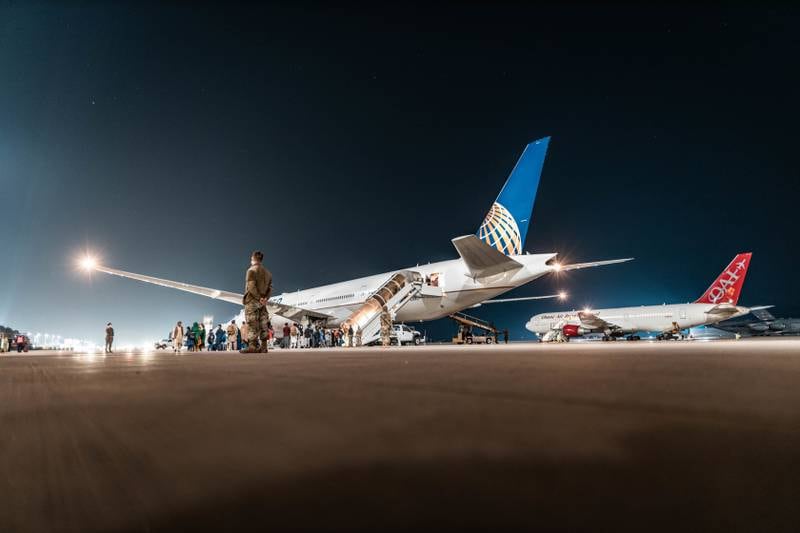COLORADO SPRINGS, Colo. — The U.S. Space Force expects to set an initial framework this summer for how it might take advantage of commercial space capabilities during wartime or crisis.
Col. Richard Kniseley, head of the Space Force’s new Commercial Space Office, said his team is working to establish this construct so that the Space Force has a capability in place to quickly access commercial capabilities before the next U.S. military conflict.
RELATED

“We have got to get these capabilities integrated in peacetime so that the warfighter has a chance to use it, so that we can integrate them into exercises and wargames to really make it part of the architecture,” he told C4ISRNET in an April 18 interview at the Space Symposium in Colorado Springs, Colo. “This is the time to do it so that if a crisis, heaven forbid, ever kicks up, you know it’s there and you know how to use it.”
Kniseley said the framework will address five “cornerstone” elements of creating what the service is calling a Commercial Augmentation Space Reserve, or CASR: contracting, programmatics, policy, operations and industry feedback.
The service is looking to the Air Force’s Civil Reserve Air Fleet as a model for crafting a commercial space surge capability. Through the CRAF, the Air Force has contracts with commercial airlines to provide extra airlift capacity to support military operations or humanitarian missions.
The Space Force met with industry in February to discuss the CASR concept and formed a task force soon after, Kniseley said. Based on initial work with policy and legal experts to understand potential barriers to relying on commercial assets for commercial missions, Kniseley said he’s optimistic that the service can establish a program within the next few years.
Incentivizing companies
“I’ve worked in the Pentagon before, so I’m as skeptical as anybody — there’s not much standing in my way on this one,” he said. “I think we have the right policy. And from a legal perspective, I think we’re good.”
Kniseley noted that there are still questions around how the Defense Department would provide protection and compensation for commercial satellites or ground systems targeted by adversaries, but said he’s confident answers are within reach.
Beyond policy, the Space Force is considering what missions might be best suited for commercial augmentation. It plans to use satellite communication as a “pathfinder” mission, but Kniseley said areas like tactical intelligence and space observation also make sense for CASR.
The task force is also considering how to structure contracts with industry and how to incentivize companies that participate in the program. The Air Force’s approach through CRAF is to offer companies intelligence updates that allow them to better understand what investments they need to make to offer capacity to the government, and Kniseley said that approach may work for CASR.
He said the most consistent feedback he’s heard from companies — both on CASR and in broader discussions about melding commercial and government space capabilities — is that they want to see action from the government.
“There’s been talk, but they want to see action,” Kniseley said. “That is definitely what I’m going to challenge my team on. . . . Success is contracts and funding and capability delivery.”
Courtney Albon is C4ISRNET’s space and emerging technology reporter. She has covered the U.S. military since 2012, with a focus on the Air Force and Space Force. She has reported on some of the Defense Department’s most significant acquisition, budget and policy challenges.








